Mark Sisson's Blog, page 356
December 1, 2012
Bacon Brussels Sprouts with Brown Butter Vinaigrette
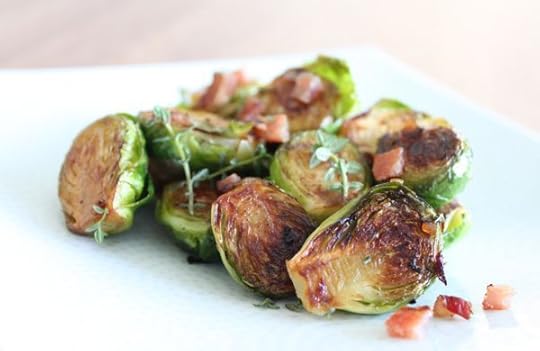 Brown-butter vinaigrette and a generous garnish of bacon make this veggie side dish almost as satisfying as a main course. Even so, the overall flavor is surprisingly light refreshing, thanks to the crisp, tender texture of the Brussels sprouts and a generous squirt of lemon.
Brown-butter vinaigrette and a generous garnish of bacon make this veggie side dish almost as satisfying as a main course. Even so, the overall flavor is surprisingly light refreshing, thanks to the crisp, tender texture of the Brussels sprouts and a generous squirt of lemon.
This recipe uses a quick and efficient cooking method that browns the outside of the sprouts while gently steaming the inside. The trick is leaving the Brussels sprouts undisturbed in a lidded pot on the stove for not much more than five minutes. It’s so much faster than roasting Brussels sprouts in the oven and also prevents the wet-sponge texture that makes overcooked Brussels sprouts so unappealing.
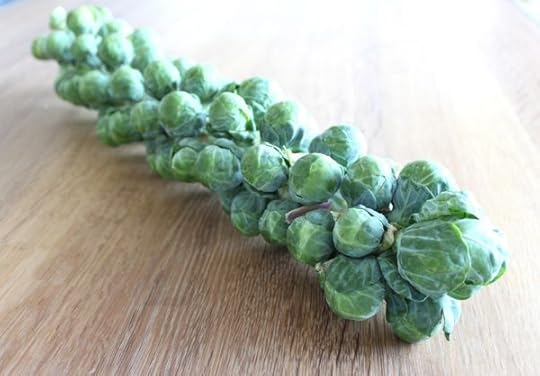
The pungency of the Brussels sprouts is tamed by bacon fat and by vinaigrette made from brown butter and lemon. A generous sprinkle of fresh herbs and more of that bacon top the dish off – light, healthy and decadent all at the same time.
Servings: Four to six
Time in the Kitchen: 30 minutes
Ingredients:
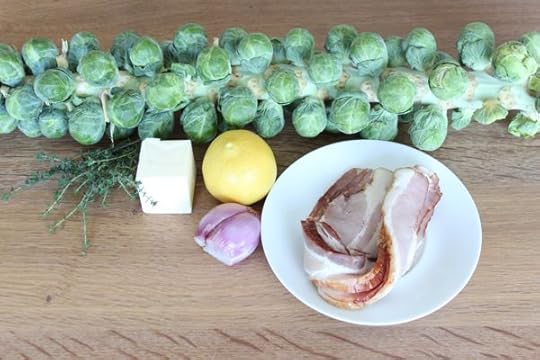
1 1/2 pounds of Brussels sprouts, bottom trimmed, cut in half (or cut into quarters if the sprouts are really large) (680 g)
4 slices of bacon
1 shallot, finely chopped
1 tablespoon lemon juice, plus more to taste (15 ml)
4 tablespoons unsalted butter (60 g)
Several tablespoons of fresh thyme and/or parsley for garnish (15 to 60 ml)
Sea salt to taste
Instructions:
In a wide pot or saute pan with a lid, cook the bacon until crisp.
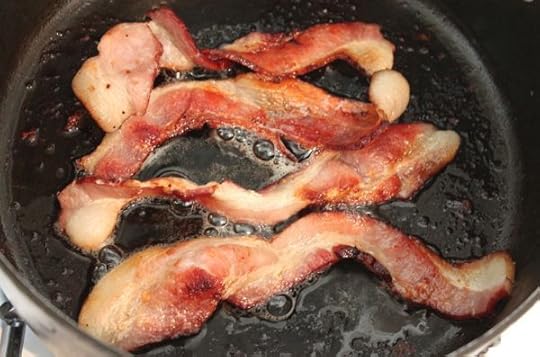
Remove the bacon from the pan and set aside to cool. Chop the bacon into small bits.
Pour all the bacon fat out of the pan into a bowl. You’ll need four tablespoons total, if you don’t have enough then add olive oil or melted butter.
In the same wide pot or saute pan used to cook the bacon, warm half of the fat over medium heat. Add the shallot to the pan then arrange half of the Brussels sprouts (or as many as you can fit in the pan in one layer) by setting them flat side down.
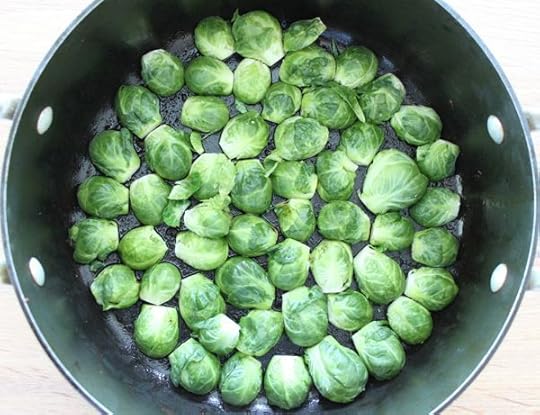
Put the lid on and cook the sprouts between five to eight minutes. The texture should be slightly crisp but tender (not mushy). They should be deeply browned on one side.
Take the lid off and stir the sprouts, using a flat spatula so you can scrape all the delicious browned bits off the bottom of the pan.

Sauté the sprouts a few minutes more then spoon into a serving bowl.
Cook the remaining sprouts the same way: Add about two tablespoons of fat to the pan, set the sprouts in the pan flat side down in one layer, put on the lid and cook for at least five minutes before removing the lid and sautéing a few minutes more.
While the second batch of sprouts is cooking, put the lemon juice in a small bowl. Next, melt the butter in a pan until it turns golden brown. Butter moves from browned to burned quickly, so be ready to turn off the heat and pour the butter into the bowl with the lemon juice before it gets that far.
Whisk together the butter and lemon juice with a pinch of sea salt.
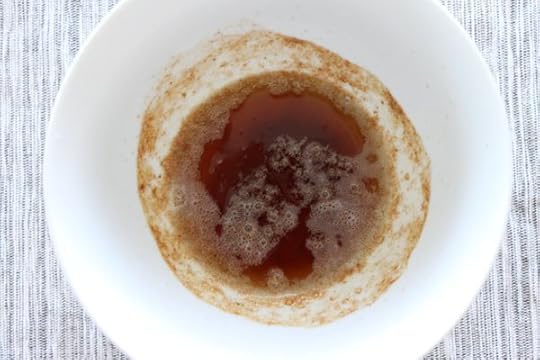
Pour over the Brussels sprouts.
Top with bacon and herbs. Add more lemon juice and sea salt to taste.

One Week to Claim Over 1 Million Dollars in Prizes!
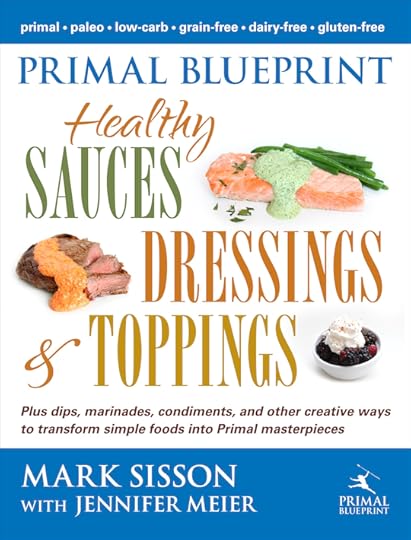
Primal Blueprint Healthy Sauces, Dressings & Toppings is just days from being released. I’m really happy with how it has turned out, and I’m sure you’ll love it. This new cookbook is all about turning ho-hum meals into Primal masterpieces with delicious and nutritious sauces, dressings, marinades, condiments, and other toppings. It includes over 120 easy-to-prepare recipes inspired by traditional and contemporary cuisine from around the world. From the staples (ketchup, mustard, hot sauce, mayonnaise) to the innovative (Blueberry Chutney, Coconut Cilantro Pesto, Avocado Lime Dressing), every recipe will enhance the nutritional value of your meal, using only Primal-approved ingredients. That means no gluten, grains, legumes, added sugar, or unhealthy oils. The recipes we developed for this cookbook have already changed the way I prepare my Primal meals. I can’t wait for it to do the same for you.
If you’re a long-time Mark’s Daily Apple reader, you know that I always do something special for devoted readers when I release a new book. Primal Blueprint Healthy Sauces, Dressings & Toppings drops on December 5th, and this book release will be no different. In fact, it will be bigger than ever…
Starting December 5th, I’ll be offering prizes with a total value of over 1 million dollars to people that buy one or more copies (it will make the perfect holiday gift!) of the book during the first week it is available. So mark your calendar and be ready to jump on this special offer while it lasts.
Don’t Miss It! Receive an Email Alert When the Limited-Time Offer is Announced by Subscribing to the Mark’s Daily Apple Newsletter

November 30, 2012
I Didn’t Know How Bad I Felt Before, Until I Started Feeling So Good!
It’s Friday, everyone! And that means another Primal Blueprint Real Life Story from a Mark’s Daily Apple reader. If you have your own success story and would like to share it with me and the Mark’s Daily Apple community please contact me here. I’ll continue to publish these each Friday as long as they keep coming in. Thank you for reading!
 Dear Mark,
Dear Mark,
I am writing to add myself to your list of PB success stories. The pictures I’ve attached above pretty much tell it. The first three were from the last few years, and they show me at my heaviest. The one in the pink gown was taken at about three months into the PB plan, and the last one, of me with the kettlebells, was taken a few days ago, at 7 months into the plan. I am holding 40 pounds worth of kettlebells and that’s how much weight I’ve lost since February of this year, with your help.



I am currently 54 years old, have struggled with weight gain and loss for the last 35 years. The yo-yo started going up and down in college, and I would gain and lose over and over. I have tried every fad diet there is, including starvation, and have done Weight Watchers three times. I was active over the years, but my food intake was typical of the standard American diet you refer to all the time. SAD indeed. I was lazy when it came to food preparation and I ate a lot of cereal, bread products, and protein, power, or granola bars. I would never have thought I could go without it like I do now. Cereal and toast or an English muffin was a favorite breakfast, and dinner of mine. I drank a lot of coke over the years.
I gained more recent weight after I had a hysterectomy in 2005. My hormones got messed up. I had a few job changes, life stressors in excess (sick parents, a son in college, financial issues), and a terrible, wheat, other grains, and sugar filled diet. If I managed to lose some, I would gain it back, plus more. I worked out with a personal trainer for close to a year in 2010. I managed to lose about 18 pounds by counting calories, carbs, protein, and doing excessive cardio, and a very strict lifting schedule. The minute I lost focus, back it came.
I had a physical exam summer of 2011 and I was unhappy with my weight (high 170s) and lab results. My cholesterol and triglycerides were high, and my HgA1C was borderline for Type 2 diabetes. I had asked my doctor to run one, because I wanted to see what my numbers were. As a nurse, I was seeing a huge increase in the number of diabetic patients and it worried me. I felt like I was headed to being a Type 2 diabetic if I didn’t change things. I didn’t feel good, I felt sluggish, and was really self conscious about how I looked.
I moved to Tennessee in August of 2011, (knowing no one, to start a new job) and joined a gym for something to do. I dabbled around at it, then the holidays started and I got heavier, and hit 183, my highest ever. I made a New Year’s resolution to lose weight, yet again. In January 2012, I got a free session with a trainer, who was sympathetic to my tale of woe. She listened to my frustrations, and then she told me she had something for me that she thought would really appeal to me. Her words were, “as a nurse (I’m a registered nurse for 34 years) you will like the science behind this plan.” She wrote your website down for me, and I was interested enough to look at it.
I studied your website for about three weeks. I read every article, every link, several success stories. I signed up for your emails, and started having many “aha” moments. I ordered the 21-Day Total Body Transformation, read it, and committed to trying it. I endured “low carb flu” and detoxed off sugar and learned how to shop differently. I started taking my lunches to work, and got a lot of questions about what many perceive as an odd eating style. Weight did not come off fast at first. I almost gave it up, about four weeks into it, because I was not seeing results like I wanted to see. I remember reading in your books, though, to stick with it and be patient and that eventually, without the constant influx of carbs my body was used to, it would HAVE to start burning my stored fat. At last, slowly but surely, pounds started dropping off.

When I bumped up my exercise by adding two or three Zumba classes a week, and walking more whenever I could, my weight loss accelerated. I noticed how much better my stomach was doing without so much bread and other grains. Over the years, I had been troubled by a lot of abdominal problems, and had one doctor tell me I had IBS. I have suffered lactose intolerance since childhood. I wasn’t having cravings anymore, I wasn’t hungry two or three hours after eating, wasn’t having frequent hypoglycemic episodes like before, and wasn’t desperate to find anything I could find to eat like I had previously.
I tell people I was a good student. I studied your information, and did what you said to do, including the planks, squats, pushups, and working on pull-ups. I started as an 80/20 girl, and I am moving over time more toward 90/10 now. I find that “when I stray, I pay” with the way I feel in my body. I’ve learned to listen to it, and be more attentive to what it’s telling me.
I have gone from 183 pounds to 143 pounds in seven months, from size 16 to size 8, and have lost 11 inches off my total measurements. My skin looks clear and bright, my hair is shinier, I feel so much better. I have more mental clarity. I am very aware of feeling lighter and how much easier movement is. I feel stronger. I have had to buy a whole new wardrobe. Even my shoes don’t fit. My FEET lost weight!
Mark, I read your articles and comments so often I feel like I know you. I want to say thank you. I am so happy that your information was given to me and that I actually looked at it!!! I am hoping very much to attend one of your Primal Conventions. Maybe 2014! The best way I can sum it up is by saying this:
I didn’t know how bad I felt before, until I started feeling so GOOD!
I’ve gone from being a sugar burner to a fat burner, and it’s still coming off. When I tell others about the PB plan, I feel like I’m paying it forward. I have started to give your website information to fellow medical staff and even some patients who ask my advice on nutrition and weight loss. I also gave it to my 23 year old son and told him I regret not feeding him better as a child! I didn’t realize until I really “got it” that food is medicine, and what you put into your body is of utmost importance to good health, and quality longevity. There is a shocking lack of good dietary and nutritional information out there, for the general public. We are still spoon fed what I now consider terribly erroneous information about food in general. I’m trying to help change that in some small way by explaining what I now know to people, and hoping they are interested enough to pursue it for themselves. I stand as an example that it can be done.

Thank you again for life changing information. I will continue to be a fan.
Sincerely,
Lynn
Grab The Primal Blueprint Cookbook Today and Receive Free S&H and a Free Primal Blueprint Poster

November 29, 2012
The Physical Toll of Negative Emotions
 Living Primally is first and foremost about taking responsibility for your own health. Though we might not be able to control each and every facet of our lives and genetics, we have considerably more power than we think. Diet, exercise, sleep, sun, social connection, and play all figure centrally into our health. (If you’ve been with us at MDA for even a week, you’ve probably figured that out.) That said, there are also more nuanced facets to wellbeing – subtler influences and interactions that we might not consider each day. True, when we rein in the bad habits and rewire unhealthy patterns, we open the door for an unprecedented level of thriving. Some of us, however, carry other kinds of baggage burdensome enough to keep us from ultimately passing over the threshold. I’m talking about the emotional cargo we live with – the anger, resentment, repression, sadness, guilt, or inertia (to name a few) – and its inevitable toll on our physiological health.
Living Primally is first and foremost about taking responsibility for your own health. Though we might not be able to control each and every facet of our lives and genetics, we have considerably more power than we think. Diet, exercise, sleep, sun, social connection, and play all figure centrally into our health. (If you’ve been with us at MDA for even a week, you’ve probably figured that out.) That said, there are also more nuanced facets to wellbeing – subtler influences and interactions that we might not consider each day. True, when we rein in the bad habits and rewire unhealthy patterns, we open the door for an unprecedented level of thriving. Some of us, however, carry other kinds of baggage burdensome enough to keep us from ultimately passing over the threshold. I’m talking about the emotional cargo we live with – the anger, resentment, repression, sadness, guilt, or inertia (to name a few) – and its inevitable toll on our physiological health.
A few months ago, Dr. Albert Fuchs wrote a post highlighting the role of guilt played in some of his patients’ symptoms. Many physicians, Fuchs explains, see people whose physical suffering has no apparent medical source – somatization in medical jargon. Their conditions, which range from insomnia to chest pain, are rooted in guilt. What these folks need, Fuchs argues, is emotional and spiritual “absolution,” not medical treatment.
Fuch’s observation is just the tip of the iceberg, I’d suggest. In recent years, studies have highlighted the role stress, emotions, and personality traits play in serious health risks. For example, research shows sadness increases our perception of pain. Anxiety increases our chance of heart attack. Stress heightens our risk for stroke. Depression raises levels of inflammation-promoting proteins and increases the accumulation of abdominal fat. Suppressing our feelings even suppresses our immune function!
Our emotions aren’t just intellectual configurations. They’re wholly visceral processes. Imagine the emotionally charged times when you’ve had sweaty palms, a tightened chest, muscle tension, a knotted stomach, constricted throat, or light-headedness. It’s all part of the inherent mind-body connection. Our emotions elicit biochemical signals that set in motion a chain of positive or negative physiological events that include or influence everything from blood pressure to blood viscosity, gastrointestinal function to pain perception.
We’re designed, of course, to experience (and recover quickly from) a wide range of emotions, but when we get stuck in a negative rut for too long, it exacts a physiological as well as psychological toll. Over time, our physical condition reflects our emotional state. The persistent physiological impact of our feelings becomes imbedded in our body itself – in skewed neurochemical patterns, inefficient systemic functioning, even epigenetic profiles.
Eastern medicine more readily acknowledges the nuances of our mind-body connection. Yoga, for one, attends to the physical tension we carry as manifestations of emotional strain. Within the strategic focus of poses and the centering of breath work, we can cultivate a physical and emotional sense of release. It’s a discipline that mirrors many other Eastern and alternative practices which appreciate either literally or metaphorically how our bodies and minds are inherently imbricated.
From an evolutionary standpoint, it also makes sense. The more we discover, the more we understand about the body’s and brain’s complementary operations in animals and in our own species. Emotions and emotional perception were part of the larger picture of survival. They spurred us to action or inaction that could save our hides when we were up against a predator or a hostile or helpful stranger. They fostered our successful interactions with kin and even our childhood caretakers.
Today, in a world much safer and more mentally detached from the imperative of the present, I think it’s easier to lose ourselves in emotional narratives (that destructive penchant for self-talk) that can extend and expand our pain beyond the actual situations that prompted them to begin with. How much of our emotional anguish is caused by an unfair or unfortunate scenario, and how much is caused by our unrelenting grip on it. Our negative emotion (e.g. anger, sadness, guilt) likely had at least some legitimate value when the circumstances occurred, but at what point does it spring not from the original event anymore but from our own self-destructive clinging?
From a personal standpoint, how many of us have lived for weeks if not months with our stomachs in knots over stress? How many have ever gone months or even years stressed by a negative relationship (be it partnership, friendship, family, or work) that caused chronic headaches, muscle tension, or other symptoms? (A literal as well as figurative pain in the neck?) How many have felt perpetually fatigued by the weight of resentment?
Hanging onto emotion after the fact, in its lesser forms, can hold us back from experiencing full thriving. In it’s worst manifestations, we let it cannibalize us. When we take responsibility for our health, we also take responsibility for our mental health and the self-talk that fuels (or constrains) our lives. It helps to cultivate a “let it go” approach to life and to let go of negative self-talk that sends us down a useless emotional path. Counselors commonly suggest patients who tend to fall into negative thought patterns nip the process in the bud by learning to identify the physical sensations that begin the downward spiral. Maybe it’s a flushed face, a head rush, or a queasy stomach. Staying attuned to our physical cues can be more effective for many people than trying to mentally police runaway thoughts.
However, taking responsibility also means being honest with ourselves about what we resist addressing in our lives. It calls us to make hard choices sometimes – to let go of friendships that aren’t serving us anymore, to take a risk moving on from a soul-sucking job, to either leave a relationship or commit to the hard (and mutual) work of reshaping it. It calls us to get real about the negative thoughts and patterns that lead us to self-sabotage our lives, actions that result in continual mental and physiological consequences. Responsibility for our wellbeing is undoubtedly life’s grandest opportunity, but it’s also our most profound accountability.
Thanks for reading today, everyone. How do you identify with or respond to the role emotions play in physical health? What advice, practices, or truths have you found meaningful in taking responsibility for your full wellbeing?
Grab a Copy of The Primal Blueprint 21-Day Total Body Transformation and Start Getting Primal Today!

November 28, 2012
Top 9 Most Important Foods to Buy Organic
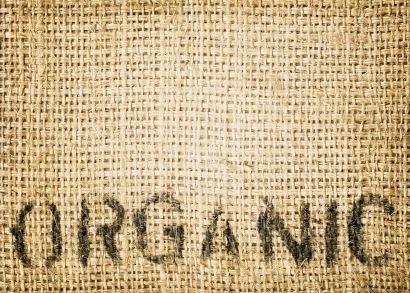 In a perfect world, we’d all be shopping at farmers markets for our produce, tending to bug-eating, orange yolk-producing chickens in our backyards, pooling our resources with other folks to divvy up grass-fed and/or pastured animals, having the farmers who produce our food over for dinner, milking the A2-casein grass-fed teats with our bare hands into BPA-free containers, culling the geese down at the local pond and roasting the dead, foraging for seagull eggs, going mushroom hunting in the forest, ensnaring chubby winter squirrels fattened on acorns and small birds, raising kale-fed crickets for alternative protein sources, and, well, you get the idea. But that isn’t realistic for most people. And heck, who would want to go to all the trouble. What with how easy it is to just swing by the grocery store on the way home from work, especially with a filthy kid in the backseat who’s just out of soccer practice (on a muddy field, no less) and starving.
In a perfect world, we’d all be shopping at farmers markets for our produce, tending to bug-eating, orange yolk-producing chickens in our backyards, pooling our resources with other folks to divvy up grass-fed and/or pastured animals, having the farmers who produce our food over for dinner, milking the A2-casein grass-fed teats with our bare hands into BPA-free containers, culling the geese down at the local pond and roasting the dead, foraging for seagull eggs, going mushroom hunting in the forest, ensnaring chubby winter squirrels fattened on acorns and small birds, raising kale-fed crickets for alternative protein sources, and, well, you get the idea. But that isn’t realistic for most people. And heck, who would want to go to all the trouble. What with how easy it is to just swing by the grocery store on the way home from work, especially with a filthy kid in the backseat who’s just out of soccer practice (on a muddy field, no less) and starving.
However, we still want to make the right choices. We want to buy the organic foods that provide the most bang for their buck, that make the most sense. You’ve probably heard of the Dirty Dozen – that annually-updated list of the twelve fruits and vegetables that contain the highest levels of pesticide residues. Let’s go beyond that, though, because unless you’re a vegan or a fruitarian who lives on produce alone, you’ll want to hear about other foods too. Particularly animal products, which you’re probably eating on a fairly regular basis.
The following list assumes you’re hitting up the regular, everyday grocery store – your Safeways, your Krogers, your Aldis – for most of your food. It’s roughly ordered from most important to least, though after baby food, dairy, and beef, the lines blur. I’d be hard pressed to choose between eggs and leafy greens, particularly given the amount of greens I eat. Luckily, this is just a thought exercise rather than a real dilemma for most. So let’s get to it. If there was one food item that I’d recommend you paying extra for, it would be…
1. Baby foods.
The human infant is a helpless sack of flesh and poop and pee. They’re cute and lovable, sure, but they can’t be relied upon to make good food choices. And because of their ridiculously long development time, babies are far more susceptible to pesticides, especially the endocrine disruptors. An adult can probably get away with a little xenoestrogenic activity from consumed pesticides, since the systems are all but established, but a young baby who’s still developing those systems? Pesticides can disrupt both fetal and childhood development. If your kid has moved on to baby food, make sure it’s organic – whether you make it from scratch or buy it at the store. That goes for the “traditional” pureed goop people give their kids, as well as the foods Primal parents are likely to offer, like liver, egg yolks, and pureed moose thyroid glands (what, you’re not giving your baby moose thyroid?).
2. Full-fat dairy.
Dairy isn’t universally lauded in the Primal community, but I’d guess a plurality of Mark’s Daily Apple readers eat some kind of dairy, whether it’s butter, yogurt, cream, or milk. If for whatever reason you’re unable to procure dairy from grass-fed cows (no, not everyone lives near a Trader Joe’s with affordable and ample stocks of Kerrygold grass-fed butter, sadly), make sure the full-fat dairy you do eat is organic. Organic dairy ensures a few things, assuming the producers follow the required guidelines. First, the latest rules stipulate that organic dairy cows must graze on pasture for the full length of the local grazing season, during which time they must obtain at least 30% of their calories from grazing. Local grazing seasons last at least 120 days, but often much longer, so your organic dairy will be coming from cows who eat at least a decent amount of fresh, actual grass. Second, conventional dairy cows eat conventional, pesticide-laden corn and soy, and those pesticides show up in the full-fat dairy. Most samples of regular butter, for example, contain pesticide residues, while organic butter does not.
3. Beef.
Organic meat cows must meet the same guidelines as organic dairy cows – pasture access during grazing season, 30% of calories from said pasture, etc. – so their meat is going to have at least a portion of the same benefits as full-on grass-fed meat, like improved CLA content, greater micronutrient status, and better flavor (if you like the actual taste of beef, that is). They’re far from fully grass-fed, true, but far better than conventional meat. Although organic meat from grocery stores will likely be raised on soy and corn, the feed will be neither genetically modified nor rich in pesticides. And organic animals aren’t allowed to receive antibiotics, nor are they pumped full of hormones. Most pesticides and contaminants preferentially accumulate in the adipose tissue, too, so especially make sure the fatty meat you eat is organic.
4. Chicken.
You might recall the hullabaloo over arsenic being detected in chicken tissue last year. That was bad, but then we learned that at least the offending food additive – Roxarsone, made by pharmaceutical giant Pfizer – had been voluntarily withdrawn from market, and we breathed a bit easier. New arsenic-based additives are still being used on chicken farms, though, and conventional chickens are still eating Roundup-ready corn and soy that’s been dosed with the organoarsenic pesticide MSMA (because, of course, it’s the only thing that will kill Roundup-resistant weeds). Perhaps the biggest concern, though, is that the fat-soluble pesticides used to produce chicken feed transfer quite well to the chicken tissues that we end up eating.
5. Eggs.
I’ll always say that eggs from pastured chickens – organic or not – are the best, but when comparing normal grocery store eggs to organic grocery store eggs, I’d strongly suggest organic. For one, the fat-soluble pesticides in chicken feed transfer to the egg yolks as well as the chicken tissues. Two, you always want to minimize the chickens’ exposure to pesticides. When your chickens are pastured, they’re getting a lot of their nutrition from bugs, grasses, scraps, and other sources, rather than just from grains. You can afford to skip organic in that case because the portion of feed with pesticides is relatively minor. If you’re dealing with primarily grain-fed poultry, though, going organic is the best way to minimize pesticide exposure.
6. Leafy greens.
Surface area, surface area, surface area. Leafy greens, particularly spinach, kale, lettuce, and collards, are virtually all surface area. As such, the entirety of their corporeal manifestation is wholly exposed to whatever’s being sprayed or applied on the farm to kill pests – and it’s tough to remove. You can scrub a carrot and wash a cucumber with vigor and they’ll stand it, but if you try to scrub a handful of mixed baby greens, you’ll shred the lot and end up with watery salad. Another mark in favor of going organic with greens is that you eat so many of them. The calorie content is low, but the average Big Ass Salad has hundreds of square inches of exposed leaf. That’s a lot of pesticide exposure, especially if you’re eating your leafy greens (you are, right?) on a regular basis.
7. Berries.
Not only are blueberries, strawberries, raspberries, and other berries subjected to some of the heaviest pesticide loads, they’re also among the most antioxidant-rich of all fruits and vegetables. And when you let berries “fend for themselves” without the help of exogenous chemical protectants, they increase their own supply of endogenous chemical protectants – the polyphenols that provide so many of the benefits associated with their consumption. Organic blueberries, for example, are higher in total antioxidants, total phenolics, total anthocyanin, malic acid, and sugars than conventional blueberries. The same goes for organic strawberries, which were more nutritious and antioxidant-rich than conventionally-grown strawberries.
8. Anything on the Dirty Dozen that’s a staple.
This is sort of cheating, I know. But everyone’s different. One family might eat sautéed bell peppers every night, in which case they should probably spring for the organic versions to avoid eating the 3rd most contaminated item on a regular basis. Or another family might chow down on potatoes every day; if so, they should go organic on those. If you’re whipping up mirepoix for stock daily, go for organic celery. Ultimately, in order to determine which foods should be consumed in the organic form you must first establish which foods you eat the most. If this were a list intended for vegetarians, I wouldn’t include meat. If this were meant for a lactose-intolerant crowd, I wouldn’t mention dairy.
9. Apples.
You may not be eating many apples, but if you do, they are officially the dirtiest fruits out there. According to the Dirty Dozen folks, 98% of all conventional samples tested had pesticide residues. There’s also some evidence that organic apples have more polyphenols and greater antioxidant capacity than conventional apples, making organic apples a no-brainer decision.
The list isn’t an ironclad pronouncement that you must follow or risk death, dismemberment, and/or terminal illness, but it is a helpful guideline that I put together based on where I get my calories and the volume of the food I eat. Your personal list might look a little different, like if you eat more chicken than beef or eggs than dairy or berries than greens. Take a look at my reasoning, follow some of the links, and come up with your own list. Is it different? Identical? Let me know in the comment section!
Grab a Copy of The Primal Blueprint 21-Day Total Body Transformation and Start Getting Primal Today!

November 27, 2012
Is It Primal? – Chai, Rice Noodles, Choffy, and Other Foods Scrutinized
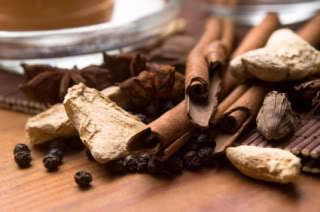 It never ends, does it? Right when you feel like you can settle down into your way of eating, right when you’re about to draw the blanket made of plants, animals, and maybe a little dark chocolate up around your shoulders and drift off to a restful sleep in your pitch black room untainted by artificial lighting, a niggling doubt of a question worms its way into your head: is [insert food or drink that you've loved since childhood/wondered about since going Primal/been asked about from curious friends] Primal? And so you toss off the blanket, leap out of bed, throw open your laptop and fire away an email to me asking about the food’s place in the lifestyle. I don’t blame you, because I’m constantly doing the same kind of thing with my own question mark foods.
It never ends, does it? Right when you feel like you can settle down into your way of eating, right when you’re about to draw the blanket made of plants, animals, and maybe a little dark chocolate up around your shoulders and drift off to a restful sleep in your pitch black room untainted by artificial lighting, a niggling doubt of a question worms its way into your head: is [insert food or drink that you've loved since childhood/wondered about since going Primal/been asked about from curious friends] Primal? And so you toss off the blanket, leap out of bed, throw open your laptop and fire away an email to me asking about the food’s place in the lifestyle. I don’t blame you, because I’m constantly doing the same kind of thing with my own question mark foods.
Yes, it’s that time again, boys and girls: another edition of “Is it Primal?” This should be a fun one with wide appeal, because today we’re dealing with a variety of foods from around the world. Chai, the famous Indian tea, gets top billing, followed by rice noodles and Choffy. Then, I finish off with my take on “gluten-free” real sourdough bread and Marmite.
Chai
I’ve written about chai before, believe it or not, because “chai” simply means “tea.” So, when you’re ordering “chai tea” and the Indian gent behind you chuckles quietly to himself, it’s because you’ve just ordered “tea tea.” What we’re really talking about when we talk about chai is masala chai, or mixed-spice tea, the aromatic, velvety, slightly (or incredibly, depending on how you take it) sweet hot beverage.
Now that we’re on the same page, let’s get something out of the way: your chai latte from Starbucks is not Primal. Your chai ice cream isn’t either, nor is the chai Belgian waffle topped with a dollop of chai whipped cream, nor is the blended iced caramel chai-atto that I just made up on the spot. But actual masala chai, absent syrupy processed sweeteners and spray can whipped cream? This is good, even great stuff.
Think about what you might get in masala chai:
Tea - Whether it’s black, green, white, oolong, or puer, tea is one of the richest sources of dietary antioxidants around (PDF). It’s strongly associated with a host of health benefits.
Cinnamon - Besides tasting great, this spice improves insulin sensitivity, improves blood lipids, boasts a strong antioxidant supply, and has anti-carcinogenic activity.
Ginger - Broadly anti-inflammatory, ginger is a potent source of antioxidants with inhibitory effects on high blood sugar, cancer, and bad blood lipids.
Cardamom - Cardamom has been shown to lower blood pressure in hypertensives and have chemopreventive properties.
Fennel - Fennel seed is another spice with antioxidant potential, including the ability to inhibit lipid peroxidation.
Clove - Clove has one of the highest levels of antioxidant activity around and contains a large number of bioactive compounds.
Not all those spices are used in every form of chai, but some of them will appear.
However, traditional masala chai does include milk and some kind of sweetener, maybe coconut sugar or honey or even just white sugar – oftentimes lots of it. So, while the tea itself and the spice constituents are undoubtedly healthy and Primal, the sugar they add probably isn’t.
Verdict: Primal, but you might try asking them to go easy on the sugar (or just make it yourself and control what goes into it directly).
Choffy
First off, what’s Choffy? It’s like coffee, only instead of roasted coffee beans being ground up and steeped in hot water, it’s roasted cacao beans being ground up and steeped in hot water to make a hot, antioxidant-rich beverage.
Unlike coffee, there’s not a lot of published research about Choffy – none at all, to my knowledge – making a solid, research-backed proclamation nearly impossible. According to the makers of Choffy, though, an 8 ounce cup has an ORAC rating of 4874.4 μmole TE. If that’s true, it has more antioxidants than “two servings of blueberries.” And that makes perfect sense. Cacao is full of polyphenols, and polyphenols come with all sorts of health benefits. If those polyphenols shine through in the brewed Choffy, I’m all for it. I don’t see why they wouldn’t, especially seeing as how the application of hot water to another type of ground up bean – the coffee bean – extracts plenty of polyphenols with plenty of health effects.
What it doesn’t have is the considerable caffeine content of coffee (it’s got a tiny amount), but it does have theobromine, a methylxanthine. Caffeine is another methylxanthine. But while caffeine raises blood pressure in the short term, theobromine lowers it. Theobromine, on the other hand, lead to “decreased calmness,” while caffeine increased alertness and contentedness. Some people report having severe cases of “the jitters” after dark chocolate; others report severe cases of “the bliss” after chocolate. I’m one of the latter group, so I’d probably do well on Choffy. Oh, and that same study found that combining caffeine and theobromine gave subjects the improved mood without the increased blood pressure, which makes me wonder what good things would happen if you brewed Choffy with coffee.
Verdict: Primal; after all, didn’t I tell you that you should eat and drink high-cacao chocolate?
Rice Noodles
One of my secret pleasures is a really good bowl of Vietnamese pho. I don’t eat it very often – usually whenever I happen to be in Orange County near Little Saigon – and I’ll more often than not leave a good number of noodles in the otherwise empty bowl when I’m done, but I find it difficult to pass up a good bowl of real bone broth, Thai basil, and odd bits of beef like tripe, tendon, and fatty brisket just because it comes with some rice noodles. I’ve gone over why I don’t think rice is particularly problematic when compared to other grains before, and that reasoning stands with rice noodles.
I would urge the consumption of white rice noodles over brown rice noodles based on personal experience. Whenever I’ve had the “pleasure” of eating brown rice pasta, I feel somewhat unwell afterwards. Maybe it’s the increased bran. Maybe it’s the weird texture. Maybe it’s the added phytic acid.
Also, research indicates that owing to their inherent slurpability, noodles are subject to far less mastication than whole grain rice. This disparity in mastication is inadvertent on our parts, by design on noodle makers’ parts. Noodles are basically meant to slide right down the throat, nary a gnashing tooth in sight. This makes it easier to shovel in more calories, of course, but not just because you’re eating faster. Your satiety hormones are actually regulated by how much you chew your food, and a study showed that by not chewing your food sufficiently, your ghrelin levels (which make you hungry) stay higher and you eat more food. When you chew each bite 40 times, ghrelin levels drop.
Make sure your white rice noodles are made with just rice. Some places add wheat flour.
Verdict: Not Primal, but if you’re eating rice, rice noodles are the same thing (and they often come with delicious bone broth).
“Gluten-Free” Real Sourdough Bread
Awhile back, I mentioned the legend of Bezian, the man with the sourdough bread that gluten-intolerants and celiacs alike could apparently tolerate. He operates out of LA and sells his wares at the Santa Monica farmers market, so I figured I’d pay a visit and give the stuff a shot. I’m not celiac, and I can get away with the odd bite of bread at a restaurant or the very occasional beer, but I get very distinct, very noticeable effects from eating a significant portion of wheat. Diving into an actual loaf of bread would surely elicit a few symptoms.
So I got a small loaf of the “most fermented” bread he had. It was maybe five bucks and had been fermented for almost a month, according to Bezian. I got home, toasted up a slice, spread some butter on it, and had a bite. It was good bread, that was for sure, sour and chewy and dense (the butter didn’t hurt, either). I had another slice, plus a few hard boiled eggs and a small green salad, just to make a meal of it. Then, I waited. Usually, thirty minutes or so post-wheat, I’ll want to use the bathroom. I’ll sometimes feel a bit spacey, as if I’ve been drugged (not in a good way, either). This didn’t happen. Playing lab rat for the sake of this post, I proceeded to eat the rest of it over the course of a few more days with my family, and no one had anything unpleasant to report. All good then?
Not quite. We know that the right fermentation conditions can produce a bread that is technically gluten-free, but those were tightly controlled lab conditions that most bakers simply don’t have. I know that actual bread makers (like Bezian) can produce bread that I don’t obviously react to and which may be tolerated by celiacs, but then again, I’m not a celiac and there’s all sorts of other damage that could be occurring underneath the hood, unbeknownst to me (many people sensitive to gluten are asymptomatic).
If you “have” to eat bread, this kind of sourdough is the best you can probably get. But really? It’s the best you probably can’t get, not unless you’re willing to fly out to LA and buy it from Bezian, or maybe unless you figure out the specific strains of yeast used by the Italian authors of the fermentation study to degrade the gluten so you can make it yourself. Sure, there’s also the chance that someone else is doing bread the right way, but you have to find them, and in this day and age of real foodiesm, I don’t think someone making real bread that celiacs can eat would go unnoticed.
Or, you know, you could just eat everything else that doesn’t seem to cause us problems – like plants and animals.
All that said, curious Primal Angelenos could always check out Bezian’s stand themselves; I’d be interested to see their responses.
Verdict: Not Primal, but it’s definitely the best bread you can do and I’d wager that it’s less harmful than regular bread.
Marmite
At first, I was going to write this one off. I mean, as an American I don’t know a whole lot about Marmite, but I was vaguely aware of it as a disgusting, overly processed brown paste that doubles as food. Since Marmite is pretty popular and I received a good number of questions about it and I trust my readers, I thought I’d take a closer look.
Marmite is made from brewer’s yeast, which is what it sounds like (the yeast used to make beer, Saccharomyces cerevisiae), plus salt and various vegetable and spice extracts. Brewer’s yeast contains naturally occurring B-vitamins, which make Marmite a pretty nutrient-dense food, but nowadays the naturally-occurring folate (folate was actually discovered through Marmite), riboflavin, and other B-vitamins are supplemented with fortified versions. They also add B12, which does not naturally occur in brewer’s yeast. And although it’s processed, that doesn’t necessarily make it harmful. You might make an argument for the addition of fortified synthetic vitamins being an issue - Chris Kresser certainly would in regards to folic acid. If that’s the case for you, too, you could always try making your own marmite.
And the UK version’s gluten-free; the Australian and New Zealand versions may not be.
Verdict: Primal limbo. It doesn’t seem all that offensive, but I’m not sure what you’re gonna eat it on if not bread and the synthetic vitamins are potentially troublesome. I guess you just had to be there (in Britain/Australia/New Zealand as a kid, that is) to get it.
That’s it for today, guys. Keep the questionable foods coming and I’ll keep on answering them as best I can. Thanks for reading!
Grab a Copy of The Primal Blueprint 21-Day Total Body Transformation and Start Getting Primal Today!

November 26, 2012
Dear Mark: Workout Break, Raw Milk, Banana Breakfast, Ketosis in Breastfeeding, and Bikram Yoga
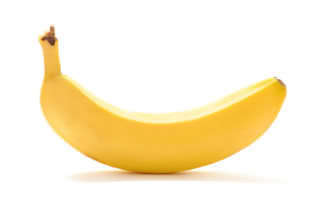 In this edition of Dear Mark, I provide rapid fire answers to five of your questions. First, I discuss another situation where the deload week(s) make(s) sense and may even have to be extended: when exercise starts taking away from the quality of your life. Next I explain why for some people raw milk is a highly-coveted food, and then whether or not a banana should be breakfast. After that, I discuss the potential impact of ketosis on breastfeeding. Finally, I discuss the benefits and potential downsides of Bikram yoga.
In this edition of Dear Mark, I provide rapid fire answers to five of your questions. First, I discuss another situation where the deload week(s) make(s) sense and may even have to be extended: when exercise starts taking away from the quality of your life. Next I explain why for some people raw milk is a highly-coveted food, and then whether or not a banana should be breakfast. After that, I discuss the potential impact of ketosis on breastfeeding. Finally, I discuss the benefits and potential downsides of Bikram yoga.
Let’s go:
Dear Mark,
I am a 32 year old female with 2 kids and have been an avid exerciser for years. I am in great physical shape and mix up my exercise routine often – sometimes doing short, intense workouts, sometimes doing longer 45 minute, steady cardio workouts. I lift heavy weights 3 times per week. My question: I find that I am more irritable/short fused and grumpy later in the day. I always workout in the mornings, and even on days that I do a “light” workout, I find myself fatigued and short-tempered.
Do you think that after exercising for so many years, that my body needs a long break? If so, should I consider taking an entire week or an entire month off? On the days that I do take “off” I find myself even-keeled, pleasant, not irritated by things. I feel as if my exercise gives me stress instead of relieving stress. Any insight you may have would be greatly appreciated.
Sincerely,
Kimmy
Yes, yes, yes. Take a couple weeks off. Take a month off. You absolutely need a break.
I wrote about the importance of a deload week a couple months back, primarily as a way to improve recovery and subsequent performance. You heard about people taking a week off and coming back to the weights stronger than before, all because they let their bodies rest, their joints catch up to their muscles, and their central nervous systems recharge. It’s definitely a good reason to take a week off, but it’s not the only reason – not by far.
Sometimes you need a break because your body is breaking down. It’s pretty simple. You say that your workouts are giving you stress instead of relieving it, and that’s exactly right. Exercise is ultimately a hormetic stressor; it seems you’ve exceeded the hormetic dosage and veered into straight up stress territory. Since taking an actual day off results in happy feelings, you even have informal evidence that the exercise is what’s causing you problems. It doesn’t get much simpler than this: take at least a week off. When you do it, take note of a few parameters to see how they’re affected.
Check your sleep. Are you sleeping better, longer, with less awakenings?
Check your temper and stress management. Are the urges to honk at the car that cut you off, speed around the oldster moseying on down the street in the oversized Buick, and run down the crosswalker lessened?
Check your mood. Are you generally happier?
I strongly suspect you’ll love your week, or weeks, off. Continue to take leisurely walks and maybe do some stretching. Try meditation, perhaps. If you’re like the gym junkies I know, you’ll go crazy without some activity. Good luck.
I read “The Definitive Guide to Dairy,” but I want more information on Raw Milk from the Primal community. Why is Raw Milk such a coveted food? It’s only available at farmers markets and limited grocery stores. Are there nutrients in Raw Milk that we cannot get from other foods? My biggest concern is the carbohydrate and sugar content, which skews our Primal Blueprint Carbohydrate Curve out of Ketosis and The Primal Sweet Spot.
Ben
Raw milk is only coveted when compared to pasteurized milk. It’s not that it’s so much better than other foods (although it is better than many of them), it’s that it’s usually so much better than pasteurized milk.
Honestly, although I don’t drink much milk, the most important thing to consider with dairy is what the animal was fed. If it spent all its time on the pasture, grazing on spring grasses and various other green things, the milk is going to contain more fat-soluble vitamins (like A, E, and K2), more carotenoids (from the green things), more conjugated linoleic acid, and more omega-3s - whether it’s raw or pasteurized. Even if it just spent most of its time on pasture with some additional feed (which is normal for dairy animals), its milk (and meat) is going to be more nutritious.
In my experience, raw and grass-fed (or at least pastured, as it’s tough to find milk from solely grass-fed animals) often coincide. Look for one and you’ll probably get the other, or close to it. So in that sense, yes, raw milk is healthier than pasteurized milk.
As for the concrete benefits? I’d direct you to Chris Kresser’s nice post on the subject, the nutritive benefits explained in which I’ll briefly summarize:
Pasteurization depletes mineral content, including iron, copper, and manganese, along with vitamin C. It also impairs B6 bioavailability, and it may lower the absorption of vitamin A by destroying a heat-sensitive dairy protein which promotes intestinal absorption of vitamin A.
Raw milk seems to be better tolerated by people who cannot tolerate pasteurized dairy.
Raw milk consumption during childhood is strongly associated with resistance against asthma and allergies later in life.
There’s also the fact that undenatured whey proteins (which, since pasteurization denatured proteins, only comes from raw milk) are able to boost glutathione, the human body’s premier endogenous/homegrown antioxidant. Glutathione combats oxidative stress, improves immunity, and prevents alcohol-related toxicity, to name just a few of its roles. Pasteurized whey proteins have a reduced effect on glutathione.
Mark,
I’ve searched MDA and other primal web resources and seem to find nothing but conflicting opinions on bananas.
Here’s my dilemma: I like a light breakfast (I love a good omelette for dinner, just not at 8a). Is a “banana a day” for breakfast a primal solution? I know many modern Groks love a big breakfast but my rhythm likes a big lunch and dinner and light breakfast.
Hope you can resolve some of the confusion for me here.
Thank you!
Justin
Bananas are food, they’re actually quite low in fructose and richer in glucose, and they taste good. Sure, they’re high in carbs, but that just means you probably don’t want to create a diet entirely made of bananas. However many carbs you’re eating, you can probably sneak in a banana without going over. And if you’re reasonably glucose-tolerant, a banana will elicit a normal glucose response.
I’ve never gotten the impression that most Primal eaters tend toward a big breakfast. Some do, some don’t, some skip it altogether. If you enjoy the light breakfast, particularly one consisting of a single banana, and you make up for the “lost” food at lunch and dinner, stick with it. You only “need” to experiment with different modalities when the one you’re currently doing stops working, at least in my opinion. To be perfectly clear, I’m not suggesting most people should be eating bananas for breakfast. I think there are better, healthier options available for most people. But if it’s working for you personally, keep at it.
Do you think it is safe to switch to primal eating habits while exclusively breast feeding. My concern is with releasing toxins into my milk if/when I enter ketosis. Can I remain out of ketosis by eating plenty of primal carbs like fruits and sweet potatoes? I’m not looking for weight loss, just healthy living. Thank you!
Amanda
As I’ve written before, you can definitely go Primal while exclusively breastfeeding, but I would advise against being in ketosis. Not because of “releasing toxins,” though. Where’d you get that info?
Stay out of ketosis to reduce the chance of inadequate calorie and nutrient intake. Ketosis can be a helpful tool for weight loss, but, as you say, you don’t need to be losing weight right now. Besides, eating fewer calories means fewer chances to obtain the nutrients you and your baby need. I’ve also heard rumblings that a very low carb ketogenic diet can reduce prolactin. Prolactin is the “milk hormone”; it regulates your milk supply. For men trying to avoid gynecomastia (man boobs)? Sure, they’ll want to reduce prolactin, but in breastfeeding mothers, prolactin is normally quite high and it should stay that way. If you hope to grow a small human from infancy, you need to produce ample amounts of milk. It isn’t guaranteed that going into ketosis will depress your milk production, but it’s not worth the risk.
Just eat your Primal carbs to stay out of ketosis. Though there are health benefits to ketosis in specific conditions (epilepsy, certain cancers, neurological disorders, obesity), I wouldn’t include “breastfeeding motherhood” among them. If you’re interested in the health benefits of ketosis, realize that simply breastfeeding – especially for longer than six months – is strongly associated with a bevy of health benefits for the mother, including weight loss, protection from breast cancer, protection from ovarian cancer, and lowered heart disease risk. So, providing ample milk to enable long duration breastfeeding is your safest bet.
Hi Mark,
I’m interested to understand where Bikram Yoga fits into a primal lifestyle if at all. I have searched your blog and I haven’t really seen anything conclusive about how the heat may potentially stress the body and if this is a good or bad thing.
I practice 3 times per week and find it fits into my routine with heavy lifting really well as it stretches out my muscles better than any other method and tends to prevent injuries. However it is pretty intense and can knock me around on some days and really leave me without anything much in the tank.
I’m really interested to know your take on hot yoga as I can’t imagine this was something Grok would have done.
Thanks
Katie
Bikram yoga is “hot yoga,” where participants practice in a room set to 104 degrees F. The elevated temperature is supposed to warm your body up, which makes stretching easier. If you like it and it seems to be treating your body well, I’d stick with it. I see no reason to change what’s actively helping you.
There have been a scant few studies done specifically on Bikram yoga, but the few that exist show evidence of significant benefits. The most recent one, from earlier this year, found that 24 sessions of Bikram yoga in eight weeks (which is three per week, exactly how you’re doing it) increased deadlift strength, shoulder flexibility, and hamstring flexibility while lowering body fat in healthy adults. The no-yoga control group evinced no such improvements. That sounds right in line with your experience, no? Bikram yoga as a helpful adjunct to strength training.
Bikram yoga has also proven useful in the development of balance. Specifically, three sessions per week (identical to your schedule once again) seemed to help the most unsteady subjects improve their balance. Those subjects who were already pretty stable in unstable situations didn’t see as much of a benefit.
In another study, Bikram yoga reduced the time it took subjects to fall back asleep after awakening in the night. On “yoga days,” subjects were quicker to fall back asleep than on “non-yoga days.”
However, there is a case study in which a guy suffered a psychotic episode that was attributed to Bikram yoga. Scary stuff, but if you’ve already been doing it on a regular basis without experiencing any breakdowns, I think you’re safe. This particular subject had a history of mental problems, though he had been in remission.
My takeaway? Bikram yoga can be a bit more stressful and intense than other forms of yoga, meaning it can offer big benefits to healthy people (who rebound from the experience and become stronger), but it can also be a bit too stressful for vulnerable or otherwise compromised individuals. That said, “regular” yoga has been shown to be extremely beneficial in a number of studies, so don’t think you have to do Bikram to get any benefits. In fact, other forms of yoga have considerably more research behind them.
Grab The Primal Blueprint Cookbook Today and Receive Free S&H and a Free Primal Blueprint Poster

November 25, 2012
Weekend Link Love
 Research of the Week
Research of the WeekA new study pushes the actual reveal of the first stone-tipped spear back to 500,000 years ago (pushing it back from 300,000 years ago), right around the time our ancestors enjoyed their massive expansion in brain size. Coincidence? Perhaps, perhaps not.
Are some of the benefits of fish oil (and perhaps other PUFAs, even oxidized ones) explained by hormesis?
Interesting Blog Posts
If you’ve ever wanted to eat dairy (but have issues with tolerating the lactose), check out Chris Kresser’s latest post on how to cure lactose intolerance.
Sweat Science shows how positive feedback isn’t just empty praise; it actually helps you learn and makes training whatever’s being praised more effective.
Media, Schmedia
Did you know that, as a meat-eater, you are predisposed toward lying, cheating, and committing sex crimes? It’s true.
Demand for grass-fed meat is growing. I wonder if grass-fed beef causes more or fewer sex crimes than corn-fed beef.
Everything Else
If you’ve ever wondered just how much vitamin D you’re getting from the sun, here’s a very handy calculator that factors in time of day, time of year, elevation, location, and other variables.
It’s always the bacon, isn’t it?
Speaking of bacon, a Chinese hog farmer is convinced that giving his animals access to a high-dive over a pond makes for better meat. It’s unclear whether or not tossing your bacon in the pool will elicit similar results.
Recipe Corner
Try this simple trick to make fluffier omeletes.
How to make Paleo Sriracha, courtesy of NomNom Paleo.
Time Capsule
One year ago (November 25 – Dec 1)
Flatulence: Foes and Fixes – Why you’re farting so much and how to fix it. The only problem with fixing your flatulence is that now you have to figure out how to be funny.
How to Eat More Fat – Most people aren’t that cool with spooning pure fat into their mouths. Here’s how to incorporate it into your diet in an enjoyable manner.
Email of the Week
“Is it poison, or is it a gift?”
“Gift” is the German word for “poison.” Ach…
- Inadvertent (or is it?) wisdom is the best wisdom.
Grab The Primal Blueprint Cookbook Today and Receive Free S&H and a Free Primal Blueprint Poster

November 24, 2012
Creamy Hot Cocoa and Egg-Less Nog
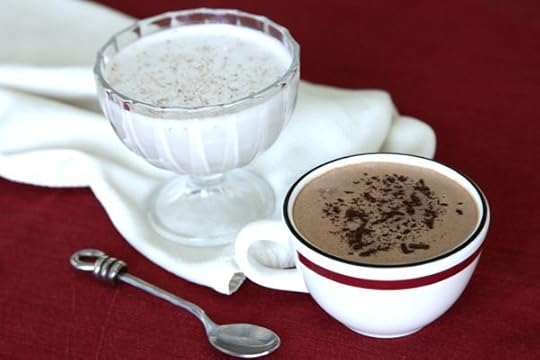 When the weather turns chilly and you’re craving a festive beverage, bypass all the stores selling over-sugared Venti drinks and head home to make your own Primal Hot Cocoa and Eggnog (or in this case, Egg-Less Nog). Sinfully rich with just the right amount of sweetness, these beverages are all pleasure and no guilt.
When the weather turns chilly and you’re craving a festive beverage, bypass all the stores selling over-sugared Venti drinks and head home to make your own Primal Hot Cocoa and Eggnog (or in this case, Egg-Less Nog). Sinfully rich with just the right amount of sweetness, these beverages are all pleasure and no guilt.
The naturally sweet flavor and creamy texture of coconut milk is a perfect non-dairy base for hot drinks. Adding a chopped date that’s simmered and then pureed with the milk makes the hot cocoa and nog even sweeter, for those who want their holiday beverage to taste like drinkable dessert. The date is optional; you can use half the amount suggested or none at all. However, dates are a great way to sweeten without adding noticeable flavor, like honey or maple syrup would.
If you’re making hot cocoa, then the ingredient that’s up next is chocolate and lots of it. Unsweetened cocoa powder brings an intense dark chocolate flavor and also thickens the drink. Add a drizzle of vanilla and your perfect mug of Primal hot cocoa is complete. Unless, of course, you want to add a dollop of unsweetened, whipped cream or a shot of espresso just for fun.
If it’s Eggnog you’re craving, then skip the chocolate and simply flavor the warm, sweetened coconut milk with nutmeg and vanilla. You’ll be surprised by how much the custard-like flavor of this simple version tastes like real Eggnog. You can, of course, throw a few raw egg yolks into the blender too, if you like, or make more traditional Primal Eggnog.
But if you don’t want to bother with slowly heating the yolks or you want to avoid raw eggs altogether, Egg-Less Nog is a delicious solution.
Cheers!
Servings: 2
Time in the Kitchen: 15 minutes
Ingredients:
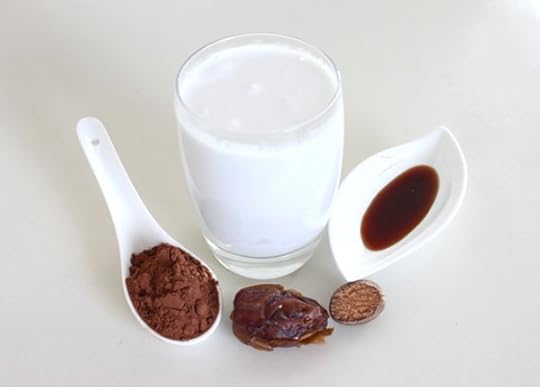
1 can (13.5 ounces) coconut milk (400 ml)
1 date, pitted and roughly chopped (this is optional for sweetening – you can omit the date or use less)
1/2 teaspoon vanilla extract (2 ml)
For hot cocoa:
2 tablespoons unsweetened cocoa powder (30 ml)
For Egg-Less Nog:
1/2 teaspoon grated nutmeg (2 ml)
Instructions:
Bring the coconut milk and chopped date to a boil in a small pot over medium-high heat.

Gently boil the coconut milk for a few minutes then turn off the heat. Let the date soak in the milk for ten minutes to soften.
Pour the coconut milk and date into a blender and blend at medium or high speed for twenty-five seconds or more until the date pieces completely dissolve in the milk.
If making hot cocoa, add vanilla and cocoa powder. If making Egg-Less Nog, add vanilla and nutmeg. Blend again until combined and frothy.
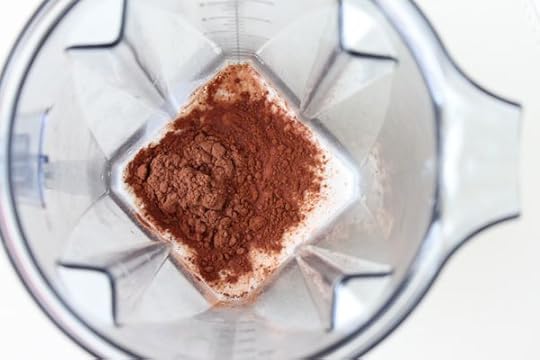
Heat gently on the stove before serving if needed.

One Week to Claim Over 1 Million Dollars in Prizes!

Primal Blueprint Healthy Sauces, Dressings & Toppings is just a couple weeks from being released. I’m really happy with how it has turned out, and I’m sure you’ll love it. This new cookbook is all about turning ho-hum meals into Primal masterpieces with delicious and nutritious sauces, dressings, marinades, condiments, and other toppings. It includes over 120 easy-to-prepare recipes inspired by traditional and contemporary cuisine from around the world. From the staples (ketchup, mustard, hot sauce, mayonnaise) to the innovative (Blueberry Chutney, Coconut Cilantro Pesto, Avocado Lime Dressing), every recipe will enhance the nutritional value of your meal, using only Primal-approved ingredients. That means no gluten, grains, legumes, added sugar, or unhealthy oils. The recipes we developed for this cookbook have already changed the way I prepare my Primal meals. I can’t wait for it to do the same for you.
If you’re a long-time Mark’s Daily Apple reader, you know that I always do something special for devoted readers when I release a new book. Primal Blueprint Healthy Sauces, Dressings & Toppings drops on December 5th, and this book release will be no different. In fact, it will be bigger than ever…
Starting December 5th, I’ll be offering prizes with a total value of over 1 million dollars to people that buy one or more copies (it will make the perfect holiday gift!) of the book during the first week it is available. So mark your calendar and be ready to jump on this special offer while it lasts.
Don’t Miss It! Receive an Email Alert When the Limited-Time Offer is Announced by Subscribing to the Mark’s Daily Apple Newsletter

November 23, 2012
I Have Never Felt Better in My Life
It’s Friday, everyone! And that means another Primal Blueprint Real Life Story from a Mark’s Daily Apple reader. If you have your own success story and would like to share it with me and the Mark’s Daily Apple community please contact me here. I’ll continue to publish these each Friday as long as they keep coming in. Thank you for reading!
 The beginning of my success story starts out as most might, with very unhealthy eating habits. I can remember as a kid in 4th or 5th grade making my own version of a milkshake which consisted of a whole row of Oreos that was mixed up with milk until it was a consistency that was near impossible to drink. Around that same time I also became addicted to Pepsi cola. It seemed like I had 2-3 cans a day and this continued throughout high school. I was a somewhat active kid and I did not seem to ever put on weight.
The beginning of my success story starts out as most might, with very unhealthy eating habits. I can remember as a kid in 4th or 5th grade making my own version of a milkshake which consisted of a whole row of Oreos that was mixed up with milk until it was a consistency that was near impossible to drink. Around that same time I also became addicted to Pepsi cola. It seemed like I had 2-3 cans a day and this continued throughout high school. I was a somewhat active kid and I did not seem to ever put on weight.
After high school I attended an art college where food took a back seat to my artwork. When I would eat, it was the typical college food, e.g. cafeteria pizza, breakfast bars, steak-ums and a lot of frozen microwavable meals (especially taquitos), while changing my consumption of cola to 4-6 Dr. Peppers a day. On the outside I seemed to be very healthy, but inside I was doing great harm to my body daily. I weighed about 130 pounds at 5’7” with barely any muscle at all.
Shortly before I graduated college I was physically assaulted. I had one side of my face crushed so badly that the bone fragments became so small I ended up having to have two six and a half hour surgeries where titanium plates were implanted and a bone grafting had to be done. To say that I was depressed is a gross understatement. My time after that was invested in personal creative projects. I shut myself off from the outside world and with the exception of the artist in me I really didn’t care about myself. I could feel myself declining into a sad state mentally, physically, and emotionally. Around this time I also noticed a gut forming.
About a year and a half after I graduated college, I landed a salary job which included a yearly travel season. Between my newfound income and not having a kitchen on the road, I was eating at restaurants and fast food joints daily. My favorite go-to food at bars were deep-fried breaded appetizers. I kind of knew these were not the healthiest decisions, so when I would buy groceries I tried to counterbalance it by buying anything that said reduced fat or fat free. Little did I know back then that saturated fat should have been my friend and that sugar and carbs should have been avoided. I assumed that fat made you fat and sugar and carbs just gave you energy. So I kept eating tons of snack food while at home and continued drinking 2-3 cans of Dr. Pepper daily. Over a five year period my weight shot up from around 135 to over 180 pounds.

Now, at a weight of over 180 pounds I put a lot of effort into pretending that I was happy. I have always been a comedian, if you will, always joking around, but I wasn’t kidding myself, I was miserable inside. I would wake up in the morning having to pop my back into place because, while sleeping on my side, my gut would twist my back out of whack. Almost daily I would throw up stomach acid, which, let me tell you, was not a great way to start the day. Headaches were a daily occurrence and I was always tired after lunch. As an artist, I did not just work from 9 to 5. I continued working on art and other projects well into the night wearing myself thin and getting stressed out way too easily.
In 2010, I can remember having a typical busy day and stopping by the grocery store after work. I decided to take my blood pressure in one of those machines by the pharmacy. I ended up doing it three different times because after I saw the first result I knew it had to have been wrong. It wasn’t. I was borderline stage three hypertension. During my next doctor appointment I was told that I had to take blood pressure medication and that for my height I was technically obese. I remember thinking to myself that the guidelines were a joke. What if it was all muscle? Would I still be obese? I was in denial.

When I turned 30 in March of 2011, I started to question my health and purchased my first scale. I had taught myself how to make sushi rolls at that time and thought it would be a great way to lose weight and “get healthy”. I actually made a sushi rolling station in my living room and ate tons of the stuff. This approach definitely did not work. My next approach was to purchase a little blender and make fruit smoothies. I was successful with making something that tasted extremely good but there was so much sugar in the drinks that my weight did not budge; it may have even gone up. Was I doomed? Was I always going to be unhealthy?
My next doctor appointment was in May of 2011. My blood pressure with medication was still in stage 2 hypertension and I was still right at the obese mark. I remember thinking that I really needed to change my life around and not knowing how to do it. I couldn’t settle with failure.
I had been reading a blog almost daily that posted an array of different authors from different websites with the common theme of personal liberty, economics, health and wellness, among other subjects. When I read the articles from what I now know was a godsend of a website MarksDailyApple.com showing success stories of how people were able to lose weight and become healthier by eating bacon, I knew it was too good to be true (just like all of the gold that was waiting for me to pick up in a Nigerian bank account). Around August of that year I noticed a friend of mine losing weight who told me it was easy. He was following what Mark’s Daily Apple talked about daily. I said I would give it a try. I knew it was going to be a challenge since I was going into my travel season and so much of the food I ate was on the list of what not to eat.
Wow, what a leap of faith. Eating more of the foods that I was taught were bad for me (bacon, eggs, butter, and other saturated fat filled foods), however, eating no sugar or grains (wait no pasta, I’m Italian, that’s not possible!). The first ten days of not eating grain or sugar was pretty difficult, but noticing the 10 pounds that shed off “effortlessly” without exercise was a great motivational factor. I was very strict with sticking to this but maybe once every 2 months I would cheat by having a piece of cake or pizza to avoid being “that person” at a social gathering. I did not cheat weekly like I hear some people do because honestly I did and still do digest grains, they are just in a liquid and fermented form. I really enjoy craft beer and did not want to give it up, and the fact that a bar opened up right by me with almost 600 different beers makes it pretty difficult to stop drinking them.
At the beginning of my travel season I started going on all my business trips with a bag of organic apples and almonds as my snacking foods, and avoided all of the foods that I had learned were bad for me. I noticed that the weight kept coming off without exercise. And when I would occasionally look at the FDA’s recommendation for a daily intake of saturated fat I was usually double or triple what they called for so I stopped reading that daily percentage and just focused on the ingredients. I used to get a kick out of it when I told people, who said they were “nutritionists,” that I would randomly eat spoonful’s of coconut oil out of the jar.
On a mission, I wanted to see how much weight I was able to lose without any exercise other than daily walking. In about 5 months I ended up losing 47 pounds and took myself off of anti-depressants and my blood pressure medication. For the first time since I can remember I was looking forward to my next doctor appointment.

As I started to think even more health consciously, I became a huge fan of kale and spinach and would blend them (with my Vitamix blender) with other vegetables like carrots and beets to add some natural sugar. An all-vegetable smoothie actually did not taste bad, it just looked god-awful to the layperson. So when I went confidently to my next doctor appointment with my smoothie in hand I was hoping for a rewarding experience. I was a little nervous because I had heard stories that doctors go crazy when you take yourself of medication. I honestly had not taken my blood pressure for quite some time because I knew I felt healthy. I did the typical weigh-in and then sat in one of the rooms. The doctor that came in looked at my chart and immediately asked what the heck I did. I was ready to have my blood pressure taken, which I used to be very nervous about, but this time I wasn’t. When he got the results he shook his head from side to side in amazement. My blood pressure was 108 over 66 with no exercise, just diet! From that point forward my doctor appointments have gone in reverse. Now they are asking me questions and apologizing for having so many to ask. They actually agreed that the FDA works hand-in-hand with big pharma and that the food pyramid was definitely way off course.
In the past two months I actually started to exercise. At this point, my main workout is doing pull ups with my door-frame bars. On my lunch breaks from work I try to do as many of them as possible as quickly as I can which adds cardio along with strength training. I never thought in a million years I would be at this point. My weight actually dropped all the way down to 127 pounds even with all of the additional muscle. During my physical 3 weeks ago, I had my cholesterol check and the results are: Total:180, HDL (good):74, LDL (bad):84, Triglycerides:109. Before I left the doctor he told me that I was a great “role model”. I don’t think I have ever heard someone tell me that before. I have never felt better in my life. Every day I am getting stronger mentally, physically, and emotionally, and Mark Sisson I have you and all the other paleo health advocates to thank along with my doctors who were so supportive. I hope my story inspires and helps others the same way that other Mark’s Daily Apple success stories have helped me.

Michael
Grab The Primal Blueprint Cookbook Today and Receive Free S&H and a Free Primal Blueprint Poster

November 22, 2012
10 Healthier Ways to Spend Black Friday
 First thing’s first. Let me wish a very Happy Thanksgiving to MDA’s American readers. I hope you’re enjoying the day and have much to be grateful for this year, including good Primal health! As for myself, I’m thankful for my wonderful family and supportive friends and colleagues. Likewise, I’m grateful for this amazing community – all of the engagement, encouragement, and challenge you all have offered me over the years. As much now as in the beginning, Mark’s Daily Apple is an evolving project. I’ve steered the site – and the books, events, and resources that have stemmed from it – with the direction of reader interests. Even the Primal Blueprint philosophy itself has unfolded in unexpected ways for me – ways inspired by the stories and questions you have brought to our collective table. Thank you, everyone, and please continue to offer your feedback.
First thing’s first. Let me wish a very Happy Thanksgiving to MDA’s American readers. I hope you’re enjoying the day and have much to be grateful for this year, including good Primal health! As for myself, I’m thankful for my wonderful family and supportive friends and colleagues. Likewise, I’m grateful for this amazing community – all of the engagement, encouragement, and challenge you all have offered me over the years. As much now as in the beginning, Mark’s Daily Apple is an evolving project. I’ve steered the site – and the books, events, and resources that have stemmed from it – with the direction of reader interests. Even the Primal Blueprint philosophy itself has unfolded in unexpected ways for me – ways inspired by the stories and questions you have brought to our collective table. Thank you, everyone, and please continue to offer your feedback.
From a personal point of view, I like beginning the holiday season with a time for thankfulness. The end of the year calls us to take stock, and it’s illuminating to do it in a spirit of gratitude.
The flip side to this holiday introspection, however, is the commercial bustle – for all its luster and lunacy. No doubt, most of us have seen or heard the ads for weeks now. The flurry even spurs its own thread of media stories, including those covering the protests this month around big box stores that will open at midnight or even 9:00 pm on Thanksgiving. Apparently, the point of the day is increasingly becoming a mere precursor to the shopping that so many people consider the main event. In addition to the shameless “creep” of shopping hours, one story seemed to take the madness to a new level. A woman in California has been camping out in front of a Best Buy for more than a week now, waiting to be the first in line when the doors open for the Black Friday sale. A younger man joined her in line earlier in the week, explaining to reporters, “I’ve got nothing else better to do.” Has it seriously come to this?
I just can’t resist – as I’m sure many of you can’t either. How many “better” things are there to do with a week of your life? (Truth be told, it could be a whole blog in itself.) For the purpose of today, let’s just talk about Black Friday. If you bristle against the commercial frenzy, what could a “Primal Friday” look like instead? Just a few modest suggestions…
Sleep in. Seriously. You know you want to. Imagine how much better you’ll feel than the folks who dragged themselves out of bed at 4:00 am.
Volunteer your time and resources. Research demonstrates a physiological benefit to our altruistic ventures (e.g. lower stress, better sleep, enhanced immune function, and reduced pain). The key is to feel genuinely emotionally invested in our volunteer endeavors. (Actually interacting with other people increases benefits as well.) Deliver charitable contributions to a local organization or volunteer to help distribute them to those in need. Bring groceries and good old fashioned funds to a local food shelf. Donate clothes and housewares to nonprofit stores that benefit area organizations. Volunteer for the day at a homeless shelter, community program, or animal rescue organization. Adopt a family for the holiday season and shop for them instead.
Devote the day to making homemade cards and gifts. If you have off work, put on a totally different hat and indulge your innate creativity. Expand yourself *and* do something a loved one will appreciate. Send humorous postcards to friends. Knit or carve a gift for someone special. Make wreaths or decorative winter planters for neighbors. Whip up some Primal jerky, gorp, tapenade, sauces, or infused vodka for friends.
Take in a cultural event. Skip the throngs at the mall and head for the concert hall, local theater, or community center. Expand your horizons, and enjoy a communal atmosphere – without the stampede.
Make a day for reminiscing and record the occasion for future enjoyment. Gather around to watch old family movies or slide shows on the computer. Tell your favorite stories of past holidays. Get a family photo taken or videotape some play time in the backyard. It will be a more meaningful keepsake for this year’s holiday season that whatever you could’ve bought.
Invite the neighbors for a casual open house. Sure, many of them will be chasing sales in the wee hours of the morning. No matter. Throw together an informal, “post-sale” brunch or a cocktail hour spread. They’ll appreciate the hospitality – and the return to a saner way of celebrating the holiday weekend.
Go in search of an exercise adventure. Hitting the gym is admirable. You definitely won’t be alone, but why not do something different? Think more play. How about a little intermittent euphoria? Try your hand at parkour. Catch some waves. Take a polar dip (with a buddy safe on shore, please). Go trail running. Grab some family and friends for a wild game of rugby or Ultimate. You know how good activity is for that Grok body of yours. Treat it to some thrills as well.
Seek out the light-hearted. Hit a comedy club, or curl up with some loved ones and your favorite funny movies. Research shows that laughter reduces stress (unlike lines at the mall), boosts our immune function, relaxes our muscles, enhances circulation, relieves tensions, and decreases pain. Devote an entire day to humor? How old are we? Exactly.
While others are hitting overrun food courts, make truly healthy meals that will keep you happily fed for a couple weeks. Mine the leftovers and fill your freezer. Make a steaming pot of turkey soup, extra containers of bone broth, a pan of spaghetti squash tetrazzini, a spicy Turkey stew, or whatever else makes good use of Thanksgiving’s delectable residuals. Making everything the next day ensures the ingredients will still be fresh. (Face it – three days from now the turkey carcass won’t inspire as much enthusiasm). You’ll appreciate having the meals on hand for hearty lunches or quick dinners.
Go on an outdoor pilgrimage. Climb a certain mountain in your area. Hit a challenging trail. Walk the full distance of a local urban trail. Be in the moment, in that place. Allow the experience to dismiss all the buzz and distractions. Use the time to center yourself on what matters to you this holiday season. Make it the beginning of an annual tradition.
Finally, drink up every bit of Thanksgiving leisure. I’m a sucker for A Christmas Story movie (wrong holiday, but still), and while I love the humor (Lifebuoy, anyone?), one of my favorite parts is the end scene in which the parents sit together, quietly enjoying the tree while the kids fall asleep and the snow falls outside. Sometimes the best part of a holiday is the quiet hours after the agenda’s been satisfied and the dishes are washed. It’s somehow the part I always enjoy the most. It’s when people are most unscheduled and unfettered. The best conversations unfold. The most intimate memories are made. Why rush it, let alone skip it altogether? We rush through the holidays and miss so much in our focus on checklists and pure logistics. The best of life so often happens in the lulls, the interludes, the end of a great evening. Don’t miss it.
Thanks for stopping by today, everybody. Happy Thanksgiving, and enjoy the holiday weekend!
Grab The Primal Blueprint Cookbook Today and Receive Free S&H and a Free Primal Blueprint Poster

Mark Sisson's Blog
- Mark Sisson's profile
- 199 followers



